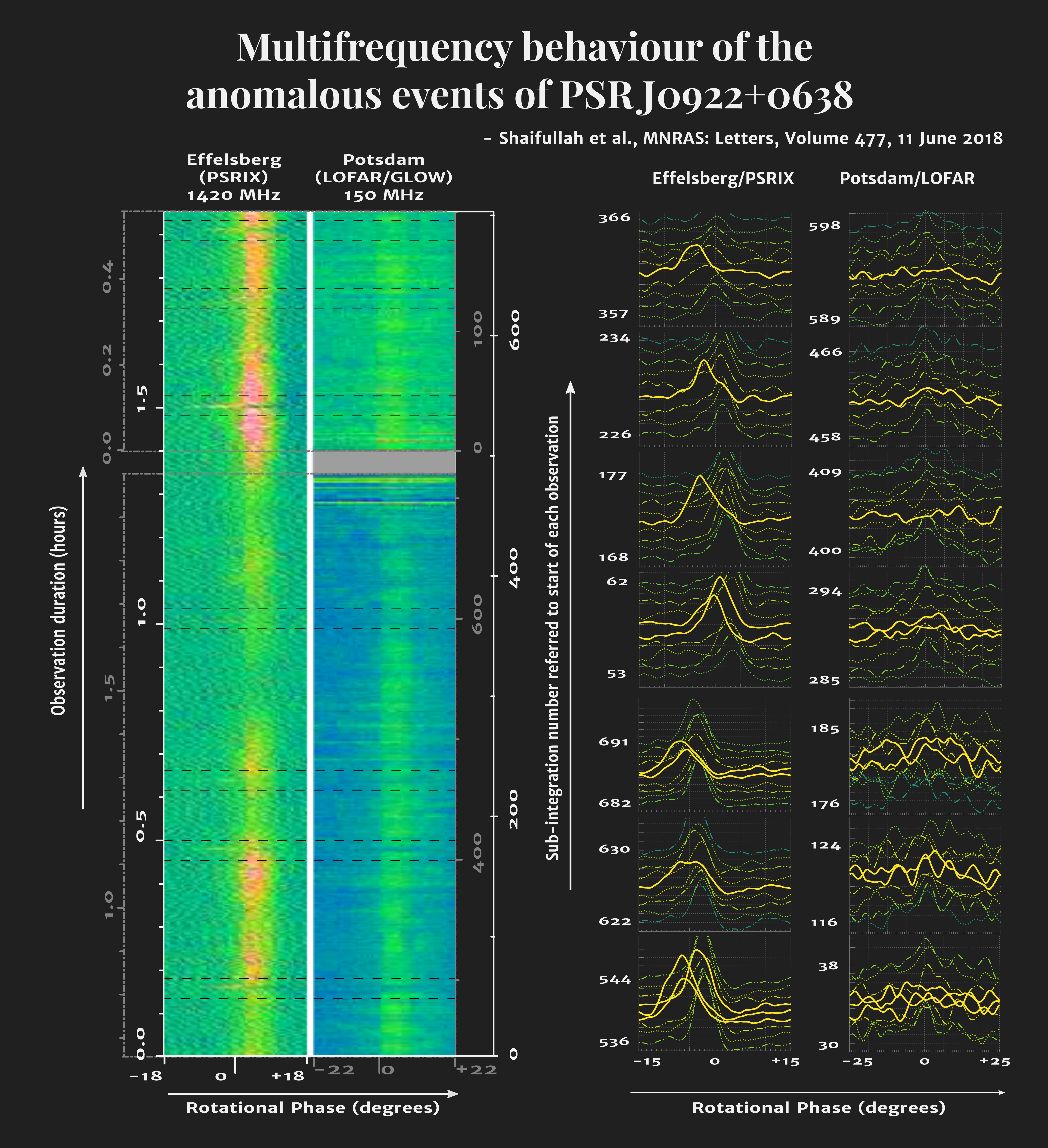Daily Image
20-06-2018Curiouser and curiouser : Multifrequency behaviour of the anomalous events of PSR J0922+0638
| Submitter: | Golam Shaifullah |
| Description: | Pulsars are rapidly rotating neutron stars, which produce intense beams of radio emission, like Galactic lighthouses. As the beam crosses a telescope, it produces a characteristic 'pulse', like the peaks in the plots on the left. The rotational stability of these cosmic flywheels often shows almost clock-like perfection. However, the pulsar J0922+0638 (B0919+06) is an atypical example which shows unexplained, anomalous variations of its rotation, where the pulse appears to episodically move to an earlier longitude for a few tens of rotations before reverting to the usual phase for several hundred to more than a thousand rotations. These events have been previously detected in observations from 300 to 2000 MHz. We present simultaneous observations from the Effelsberg 100-m radio telescope at 1420 MHz and the Bornim (Potsdam) station of the LOw Frequency ARray (LOFAR) at 150 MHz. The colour intensity diagrams on the furthest left show the received radio power (or flux) as a function of the rotational phase along the X-axis and the total observation time along the Y-axis, such that blue represents low power and red, the maximum. Note the narrow spikes protruding to the left between the black dashed lines. The coloured line-plots show the regions bounded by black dashed lines on the intensity diagram. Each line represents the flux over 10 seconds. The solid yellow lines denote the maximum 'swing' of the pulse longitude. We show the absence of the phase-shifting behaviour at 150 MHz. Instead, the observed intensity at the usual pulse-phase typically decreases, often showing a pseudo-nulling feature corresponding to the times when shifts are observed at 1420 MHz. The presence of weak emission at the usual pulse-phase suggests that these shifts may result from power being absorbed by material lying along the line of sight. |
| Copyright: | Authors, CC BY-SA |
| Tweet |  |
